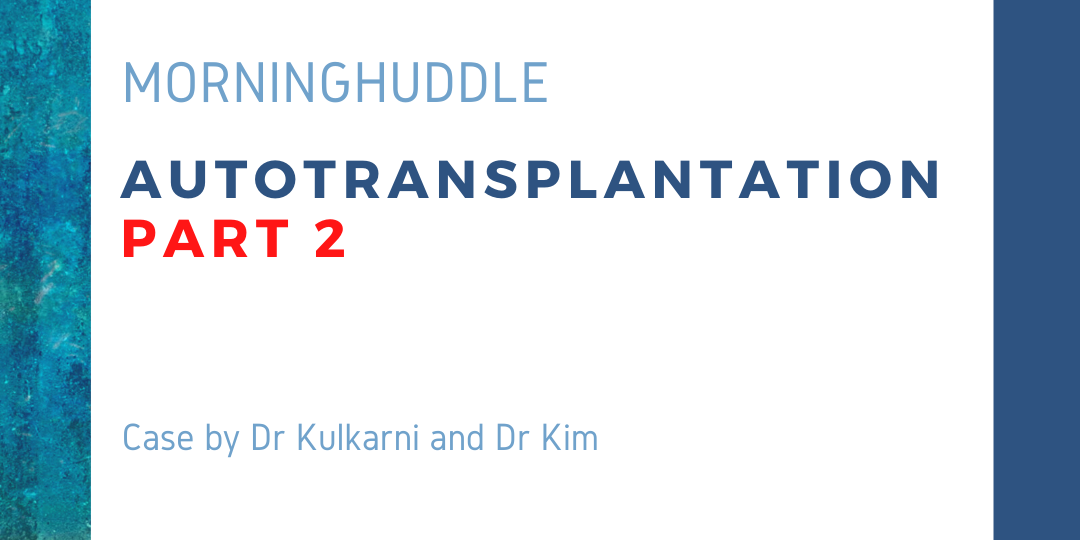| The following presentation is a sequel case series on the management of ectopic eruption of teeth. Part 2 As we’ve discovered, autotransplantation can be an efficient means in treatment of ectopic eruption of a tooth in an adolescent patient. For this procedure to be successful many factors need to be considered. In this article we will introduce a case completed by Dr. Kulkarni and Dr. Kim in preparation for our guidelines in approaching autotransplantation in practice in Part 3. |
| Patient: 13-year-old female CC: Small upper canines RMH: Non contributory dental, medical and familial history |
 |
IOE:
- Impacted, ectopic permanent maxillary canines
- Retained primary right and left maxillary canines
- Class 2 occlusion Division 2
- 70% overbite, 1mm overjet
Radiographic Exam:
- Ectopic impacted permanent maxillary canine positioning revealed on panoramic and CBCT exam.
- Primary maxillary canines in their normal position
 |
Treatment Protocol:
- Orthodontic space gaining with 0.020 inch SS archwire in order to accommodate the permanent canine for two months
- Surgical transplantation initiated
- Prophylaxis and chlorohexidine rinse prior to extraction
- Minimal buccal and lingual flap incisions made and recipient site prepared with implant drill to approximate the size and shape of permanent canine
- Atraumatic extraction initiated without the use of elevators avoiding contact with root and maintaining PDL structure intact
- Ectopic canines transplanted into recipient socket with extra oral time of less than 30 seconds and placed out of occlusion
- C-Blast Putty demineralized cancellous bone gel injected into socket, hemostasis obtained and 3-0 chromic gut sutures placed
- 0.0175-inch coaxial twist SS wire passively adapted transplanted tooth with neighboring for stabilization
- Post op included soft diet, gentle hygiene of transplanted tooth, and week prescription of 500mg Amoxicillin
- Excellent healing noted in surgical sites a week following procedure
- 0.012-inch thermal nickel-titanium wire was utilized for light orthodontic force 3 weeks following surgery
- Orthodontic wires changed sequentially at four to six week intervals (nickel-titanium 0.014-inch, 0.016-inch by 0.022-inch, SS 0.016-inch by 0.022-inch, 0.017 by 0.025-inch)
- Retainer placed after reaching proper orthodontic orientation of dentition
 |
| Final Thoughts Successful autotransplantation of teeth involves pulpal and periodontal ligament regeneration which are dependent on atraumatic sterile transplantation protocol in a healthy patient with a healthy donor tooth. 1.5 year follow up revealed complete healing without discomfort, normal thermal response, probing depth of 1.5mm all around and radiographically normal apex and PDL space. Generally, autotransplantation can be a suitable option for patients in late mixed dentition for treatment of ectopic eruption in order to establish normal proprioception and thermal response of the donor tooth. With normal physiology intact, practitioners have the ability to orthodontically align transplanted teeth in obtaining suitable occlusion, preserve alveolar bone, reduce treatment time and cost for the patient. |
Today’s Morning Huddle Case was completed by Dr. Gajanan Kulkarni and Eui Clara Kim


